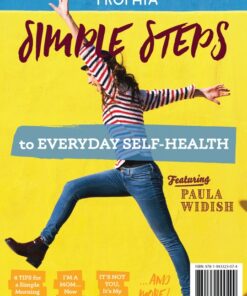It’s February. The month we dedicate to the celebration love. What symbol pops into your head when you consider the word “love”? A heart, of course. While the human heart is only kinda sorta the same shape as the symbol we’re familiar with, thinking about it prompted me to revisit all the things I’d forgotten about this imperative organ housed in our chest.
Make a fist—that’s about how big your heart is. It works all day, every day, pumping 100,000 times in 24 hours. Each pump circulates blood to and from almost every cell in your body, delivering oxygen and nutrients while eliminating carbon dioxide and waste.
A woman’s heart functions differently than a man’s. In many ways, the female heart truly is more tender and delicate than the male equivalent. For starters, it weighs less on average (118 grams vs. 178 grams). Not only that, but our veins are thinner, and they beat more rapidly (78–82 vs. 70–72 beats per minute). However, our veins are also more resilient when it comes to heart disease—at least until menopause sets in.
Did you know your heart can continue to beat even after it’s removed from the body, for as long as it receives oxygen? It’s true, thanks to its own electrical system that produces the heartbeat. Granted, this doesn’t go on forever. According to Discovery Health, once a donor’s heart is removed from body, it can survive for approximately four hours.
A low carb diet is what your heart craves. In a 1952 paper titled “The Heart in Chronic Malnutrition,” researchers attribute the affects of malnourishment on the hearts of Bantu adults in South Africa to their high carb diet and vitamin B deficiencies. The authors state the natural Bantu diet lacked animal protein and showed an imbalance in amino acid intake, factors behind the malnourishment that took such a toll on the hearts and body functions of the Bantu people.
Just a few years later, in 1958, Benjamin P. Sandler, MD, published his fascinating book How to Prevent Heart Attacks. Sandler urges us to “eat only proteins, fats, and non-starch, non-sugar carbohydrates.”
If you’re interested in building your self-health heart education at no cost, you can find Sandler’s text in it’s entirety at the SRP Historical Archives. The Archives feature more than 300 timely, fascinating articles, all available for free. Don’t balk at the date as the information is timeless. After all, our hearts still function and thrive in the same way they did back then.
Spend this month giving your heart all the love that it deserves. Re-educate yourself on everything you forgot about the well-being of this essential organ, and give it what it needs to makes its job as easy as possible.
Photo from iStock/kirstypargeter


